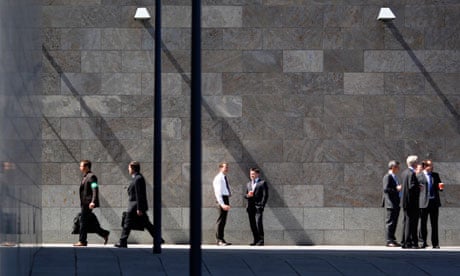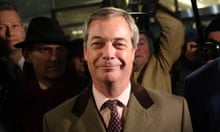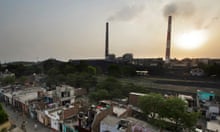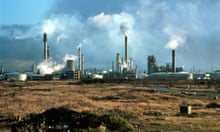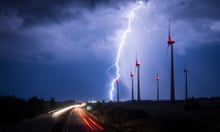The European Union's Emissions Trading System (ETS) is the world's biggest scheme for trading greenhouse gas emissions allowances. Launched in 2005, it covers some 11,000 power stations and industrial plants in 30 countries, whose carbon emissions make up almost 50% of Europe's total.
A cap on the total emissions allowed within the scheme is set, and allowances adding up to the cap are provided to the companies regulated by the scheme. The companies are required to measure and report their carbon emissions and to hand in one allowance for each tonne they release. Companies can trade their allowances, providing an incentive for them to reduce their emissions.
The current cap is set to fall by 1.74% annually to achieve a target of reducing emissions in 2020 to 21% below their level in 2005. In June 2011 the price of an allowance was around €16. The trade in permits is worth around $150bn annually, dwarfing other emissions trading schemes (the Clean Development Mechanism market established by the UN is valued at $1.5bn annually).
In a basic sense the ETS has worked. It has set a cap on half of Europe's carbon emissions, which were previously unregulated, and the companies covered by the scheme are no longer free to pollute. Carbon has a price and this influences the economics of burning fossil fuels.
For example, burning coal creates more carbon pollution than burning gas, so coal plant operators need more permits. The higher the price of the permits, the more expensive it is to use coal rather than gas. Power companies choosing how to generate electricity therefore have an extra cost associated with the more polluting options, so they'll choose gas over coal more of the time.
Putting precise numbers on how far the ETS has worked in practice is difficult, as it means estimating what the level of pollution would have been if the ETS was not in place. It is likely, however, that in its first few years, the scheme was responsible for turning an anticipated increase in emissions into a decline of 2.5-5%. One in-depth study analysed background emissions, economic trends and weather patterns, and concluded that between 2005 and 2007 the ETS reduced emissions by 120-300m tonnes, with a best guess of 210m tonnes across Europe.
These are fairly modest gains – especially in the context of rapidly of increasing imports of carbon-intensive goods from China and elsewhere – and although steeper reductions have been set for the third 'phase' of the ETS, which runs from 2013 to 2020, the policy has been heavily criticised and beset with problems, not least of which is the large number of permits expected to be held over from the current phase. Nonetheless, Europe has a price on carbon and a working mechanism to limit and reduce climate pollution, which puts it further ahead than other major regions in the world.
This article was provided by Sandbag, part of the Guardian Environment Network.
The ultimate climate change FAQ
This answer last updated: 03.06.2011
Read about the project and suggest a question
Report an error in this answer
Related questions
What is the Kyoto protocol and has it made any difference?
What is the economic cost of climate change?
Is the world really getting warmer?
This editorial is free to reproduce under Creative Commons
This post by The Guardian is licensed under a Creative Commons Attribution-No Derivative Works 2.0 UK: England & Wales License.
Based on a work at theguardian.com
